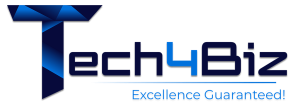- October 23, 2024
- 4:43 pm
Beyond Cryptocurrencies: Exploring the Transformative Potential of Distributed Ledger Technologies in Various Industries
Distributed Ledger Technologies (DLT) are revolutionizing the way we conduct transactions, manage data, and ensure transparency across various sectors. While many associate DLT primarily with cryptocurrencies like Bitcoin and Ethereum, its applications extend far beyond the financial realm. This blog will delve into how DLT is transforming industries such as finance, supply chain, healthcare, and public administration, highlighting its potential to enhance security, efficiency, and trust.
Understanding Distributed Ledger Technology
At its core, DLT is a decentralized database that records transactions across multiple locations simultaneously. Unlike traditional ledgers, which are maintained by a central authority, DLT allows for multiple participants to access and verify the information in real-time, creating a shared source of truth. This decentralization not only improves security by reducing the risk of a single point of failure but also fosters transparency and trust among participants.
Transformative Applications of DLT
1. Finance and Banking
The financial sector was one of the first to recognize the potential of DLT. Beyond cryptocurrencies, financial institutions are exploring blockchain technology for various applications:
- Cross-Border Payments: Traditional international transfers can take days and incur high fees. DLT enables near-instantaneous transactions at lower costs, improving efficiency in cross-border payments.
- Smart Contracts: These self-executing contracts automatically enforce the terms of an agreement when predefined conditions are met, streamlining processes such as loan approvals and insurance claims.
2. Supply Chain Management
DLT enhances supply chain transparency and efficiency by providing a real-time view of the entire supply chain process. Key benefits include:
- Traceability: With DLT, every transaction in the supply chain is recorded and verifiable, allowing stakeholders to track the origin of products and verify their authenticity. This is particularly valuable for industries such as food and pharmaceuticals, where safety and quality are paramount.
- Reduced Fraud: DLT can mitigate issues like counterfeiting by providing an immutable record of transactions, ensuring that products are genuine and reducing the risk of fraud.
3. Healthcare
In healthcare, DLT has the potential to transform data management and patient care:
- Secure Patient Records: DLT allows for the creation of secure, immutable patient records that can be shared among healthcare providers while ensuring patient privacy. This leads to better coordination of care and improved patient outcomes.
- Clinical Trials and Research: DLT can streamline the management of clinical trials by ensuring data integrity and transparency, allowing researchers to track results and verify the authenticity of data.
4. Public Administration and Governance
Governments are increasingly exploring DLT to enhance transparency and accountability in public administration:
- Voting Systems: DLT can create secure and transparent voting systems that reduce the risk of fraud and increase voter confidence in electoral processes.
- Land Registry: By using DLT for land registration, governments can provide a transparent and tamper-proof record of property ownership, reducing disputes and fraud.
Emerging Trends in DLT
As DLT continues to evolve, several emerging trends are shaping its future:
- Interoperability: The ability of different DLT systems to communicate with each other is becoming increasingly important. Interoperability will facilitate seamless transactions across various platforms, enhancing the overall ecosystem.
- Regulatory Frameworks: As DLT gains traction, regulatory bodies are working to establish guidelines that ensure its safe and ethical use. A clear regulatory framework will help build trust and encourage broader adoption.
- Integration with AI and IoT: The combination of DLT with artificial intelligence (AI) and the Internet of Things (IoT) is opening new avenues for automation and efficiency. For instance, smart devices can autonomously execute transactions based on real-time data, streamlining processes across industries.
Challenges to Adoption
Despite its transformative potential, several challenges hinder the widespread adoption of DLT:
- Scalability: As the number of transactions increases, ensuring that DLT systems can handle large volumes of data without compromising speed and efficiency is crucial.
- Scalability: As the number of transactions increases, ensuring that DLT systems can handle large volumes of data without compromising speed and efficiency is crucial.
- Energy Consumption: Some DLT implementations, particularly those using proof-of-work consensus mechanisms, consume significant amounts of energy. Developing more sustainable solutions is essential for long-term viability.
Conclusion: Embracing the Future of DLT
Distributed Ledger Technologies are poised to revolutionize a multitude of industries beyond cryptocurrencies. By enhancing transparency, security, and efficiency, DLT has the potential to transform how businesses operate and interact with customers. As organizations begin to embrace DLT’s capabilities, the focus must shift to addressing the challenges that lie ahead, ensuring that the technology is scalable, sustainable, and regulated effectively.
In this rapidly evolving digital landscape, embracing DLT could be the key to unlocking new opportunities for innovation and growth. Organizations that invest in understanding and implementing DLT will position themselves at the forefront of this technological revolution, paving the way for a more transparent, efficient, and secure future.
Hey
I'm Emma!

Lorem ipsum dolor sit amet, consectetur adipiscing elit. Ut elit tellus, luctus nec ullamcorper mattis, pulvinar dapibus leo.
